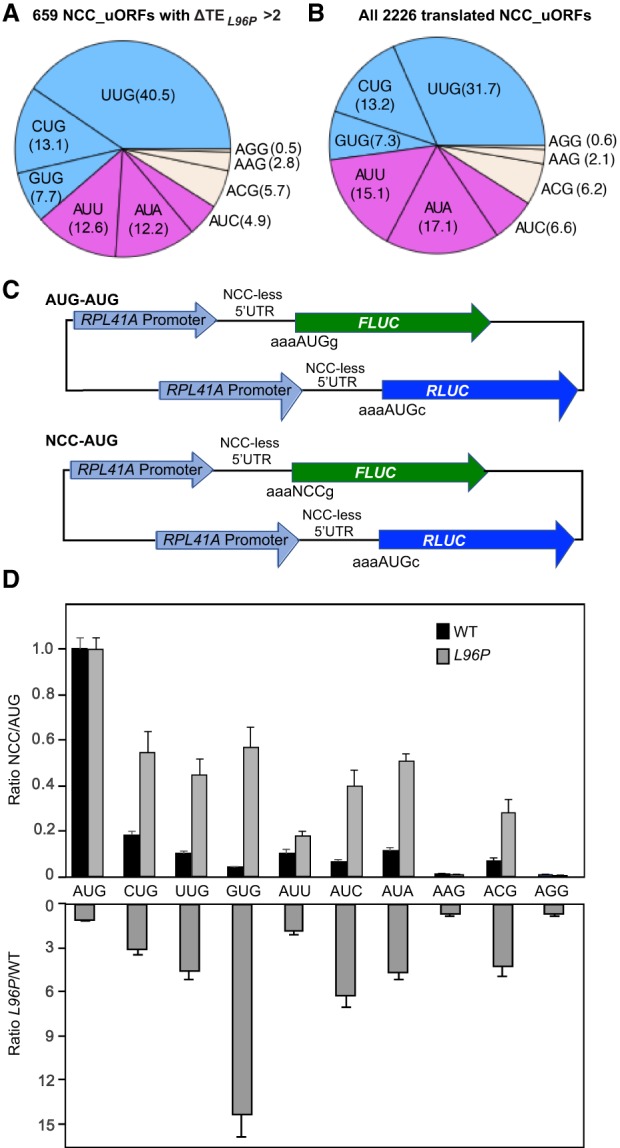FIGURE 5.

sui1-L96P increases the utilization of multiple near-cognate start codons. (A,B) Distributions of NCC start codons for the 659 NCC_uORFs exhibiting significantly increased uORF TEs in L96P vs. WT cells (A) and for all 2226 NCC_uORFs translated in our strains (B), described in Figure 1E. (C) Schematics of dual-luciferase reporter constructs with both FLUC and RLUC reporters containing the RPL41A promoter and RPL41A 5′UTR modified to lack all NCCs. The FLUC reporters contain either AUG (AUG–AUG constructs) or each of the nine different NCCs as start codons (NCC–AUG constructs). (D) Six transformants of WT or sui1-L96 strains harboring each of the 10 different NCC–AUG, or the control AUG–AUG, reporter constructs were cultured in SC-Ura at 30°C to A260 of ∼1.0, and firefly and renilla luciferase activities were assayed in the same WCEs. The mean ratio of FLUC/RLUC light units was calculated for each NCC–AUG construct and normalized by the mean FLUC/RLUC ratio produced by the control AUG–AUG construct in WT and L96P samples. The mean of normalized NCC/AUG reporter expression ratios (±SEM) are plotted in the upper panel, and the ratios of normalized NCC/AUG expression ratios between sui1-L96P and WT cells are plotted in the lower panel. The background signal in these experiments determined using cell extracts from a WT strain lacking a LUC reporter is ∼4.5 units; and expression of the AAG and AGG FLUC reporters in WT cells is much higher than this background level.
